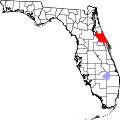2010 and 2020 census
As of the 2020 United States census, there were 12,865 people, 5,587 households, and 3,177 families residing in the city. [9]
As of the 2010 United States census, there were 12,252 people, 5,485 households, and 2,885 families residing in the city. [10]
2000 census
As of the census of 2000, there were 13,177 people, 5,851 households, and 3,604 families residing in the city. The population density was 3,698.2 inhabitants per square mile (1,427.9/km2). There were 6,457 housing units at an average density of 1,812.2 units per square mile (699.7 units/km2). The racial makeup of the city was 88.67% White, 7.85% African American, 0.12% Native American, 1.21% Asian, 0.05% Pacific Islander, 0.53% from other races, and 1.57% from two or more races. Hispanic or Latino of any race were 2.89% of the population.
In 2000, there were 5,851 households, out of which 25.0% had children under the age of 18 living with them, 44.4% were married couples living together, 13.0% had a female householder with no husband present, and 38.4% were non-families. 29.6% of all households were made up of individuals, and 11.9% had someone living alone who was 65 years of age or older. The average household size was 2.24 and the average family size was 2.75.
In 2000, in the city, the population was spread out, with 20.3% under the age of 18, 8.7% from 18 to 24, 28.6% from 25 to 44, 23.5% from 45 to 64, and 18.9% who were 65 years of age or older. The median age was 40 years. For every 100 females, there were 92.8 males. For every 100 females age 18 and over, there were 89.3 males.
In 2000, the median income for a household in the city was $31,180, and the median income for a family was $36,417. Males had a median income of $27,500 versus $21,676 for females. The per capita income for the city was $17,401. About 7.9% of families and 10.7% of the population were below the poverty line, including 12.9% of those under age 18 and 7.8% of those age 65 or over.


